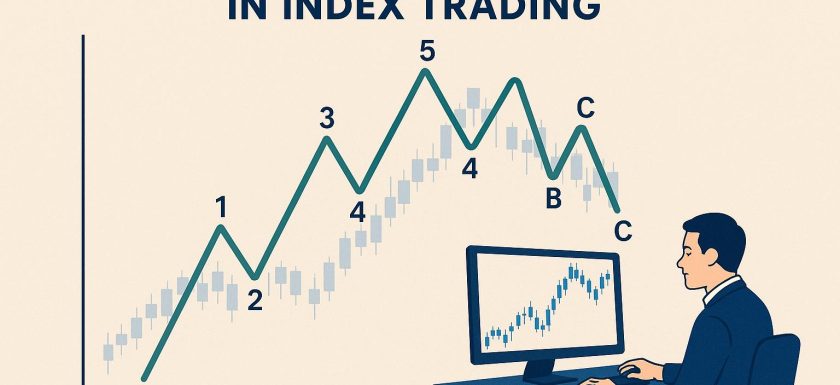
Understanding Elliott Wave Theory
Elliott Wave Theory is a popular analytical approach used by traders to predict future price movements in the financial markets. Originally developed by Ralph Nelson Elliott in the 1930s, the theory is based on the belief that markets move in waves, which reflect the inherent psychology of the market participants. This approach can be particularly useful in index trading, where traders attempt to determine market direction and identify potential opportunities. In this article, we will delve deeper into the intricacies of Elliott Wave Theory, exploring its basic principles, practical applications, and the considerations traders must take into account when employing this method.
Basic Principles of Elliott Wave Theory
Elliott Wave Theory posits that market prices move in patterns, known as waves, which are driven by collective investor psychology. The theory suggests that these waves occur in predictable cycles based on specific patterns. The fundamental structure of these waves consists of a five-wave sequence in the direction of the main trend, followed by a three-wave corrective sequence opposite the trend.
Impulse Waves
Impulse waves form the backbone of Elliott Wave Theory and are crucial in identifying the direction of the main trend. An impulse wave comprises five sub-waves, labeled as 1, 2, 3, 4, and 5. Of these, waves 1, 3, and 5 are known as motive waves, which align with the prevailing trend, while waves 2 and 4 are corrective waves that move against the primary trend. This five-wave structure is a representation of the broader market movement and forms the foundation for recognizing trend direction.
Corrective Waves
After the completion of the impulse wave, the market typically enters a correction phase, which is characterized by three corrective waves identified as A, B, and C. These waves generally retrace a portion of the price movement covered by the previous impulse waves. Corrective waves serve as a mechanism for the market to adjust, providing traders with opportunities to capitalize on expected reversals before a new impulse phase resumes.
Applying Elliott Wave Theory to Index Trading
Understanding the practical application of Elliott Wave Theory in index trading involves several steps and considerations for traders. By analyzing wave patterns, traders can potentially forecast future index movements, set appropriate trading points, and refine their overall strategy.
Identifying Wave Patterns
The first step for traders using Elliott Wave Theory is to identify wave patterns on their trading charts. This involves recognizing the sequence of impulse waves followed by the corrective waves. Traders keen on successful pattern recognition must exercise diligence and precision, as accurately identifying these patterns is critical for understanding the current trend and predicting the index’s likely future path.
Setting Entry and Exit Points
The ability to determine entry and exit points with greater precision is one of the key benefits of using Elliott Wave Theory in trading. By analyzing when a corrective wave is near completion, traders can look to enter positions in alignment with the next anticipated impulse wave. Conversely, when nearing the end of an impulse wave, traders may seek to exit their positions, thereby minimizing potential losses as the corrective phase begins.
Using Fibonacci Ratios
The integration of Fibonacci ratios with Elliott Wave Theory acts as a robust tool for traders seeking to pinpoint potential areas of support and resistance within the wave patterns. Fibonacci retracements and extensions, commonly marked at levels like 38.2%, 50%, and 61.8%, are used by traders to gauge possible reversal points, thus enhancing their ability to make well-informed trading decisions.
Challenges and Considerations
While the benefits of Elliott Wave Theory in index trading are well-noted, traders should be cognizant of its challenges. Applying Elliott Wave Theory necessitates a firm grasp of its principles and diligent practice to master. The analysis of wave patterns involves a degree of subjectivity, and erroneous wave identification can lead to flawed trading actions. Consequently, traders are advised to complement Elliott Wave Theory with other technical analysis techniques to bolster the accuracy of their trading decisions.
Continuous Learning
Achieving success with Elliott Wave Theory is contingent on continuous learning and adaptability. Traders should consistently engage with educational materials, study historical wave patterns, and refine their skills in precisely identifying wave structures. This ongoing process enhances a trader’s expertise and their ability to make informed trading choices.
For a deeper exploration of Elliott Wave Theory and its application in trading, traders are encouraged to consult various resources available online.
Traders who effectively incorporate Elliott Wave Theory into their index trading strategies may find that it offers a more explicit understanding of market trends and potential reversals, ultimately supporting more informed and strategic trading decisions. The ability to align with the market’s rhythm through the precise identification of wave sequences can be a significant advantage in navigating the complexities of index trading.
This article was last updated on: August 28, 2025
